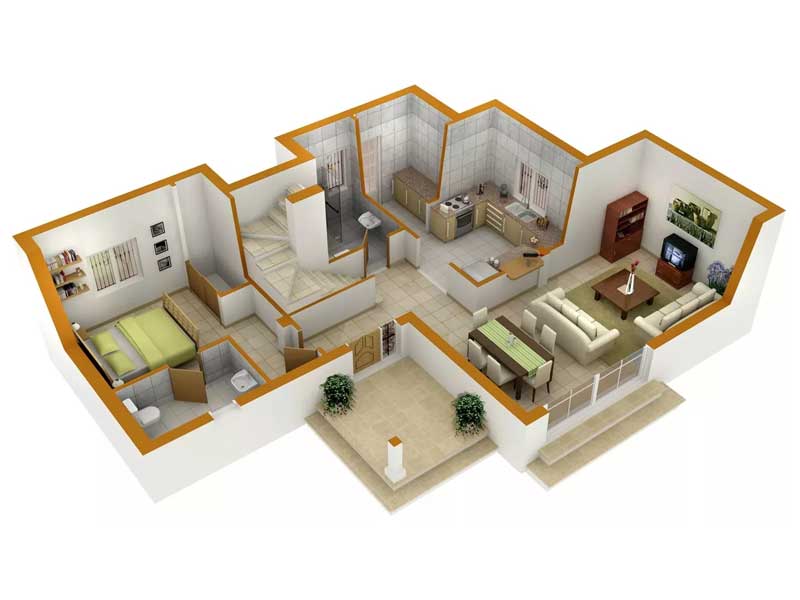Mastering the Art of Crafting an Exceptional Floor Plan for Your Renovation
Creating an effective floor plan is a critical step in any home renovation project. It sets the stage for transforming your space into a functional and aesthetically pleasing environment. An exceptional floor plan not only maximizes space utilization but also enhances the flow between rooms, improving the overall livability and appeal of your home. This detailed guide will walk you through the essential steps and considerations for designing a floor plan that meets your needs and exceeds your expectations.
Understanding the Basics of Floor Plan Design
A floor plan is a scaled diagram of a room or building viewed from above. It serves as a blueprint for designing or remodeling spaces, allowing homeowners and designers to visualize the arrangement of rooms and the flow of the space. A well-thought-out floor plan considers the size and function of each room, the relationship between spaces, and how the area will be used by its inhabitants. Starting with a clear understanding of the basics is the first step towards creating a floor plan that is both functional and beautiful.
Identifying Your Renovation Goals and Needs
Before sketching your first line, clarify your renovation objectives and lifestyle requirements. Are you aiming to create an open-plan living area, increase natural light, or improve the functionality of a cramped kitchen? Understanding your primary goals will guide the layout and design decisions throughout the planning process. Consider the needs of all household members, including any special considerations such as accessibility issues or work-from-home spaces.
Maximizing Space and Flow
One of the keys to a successful floor plan is the efficient use of available space. This involves creating a balance between private and communal areas and ensuring a logical flow through the home. Open-plan layouts can offer flexibility and a sense of spaciousness, but it’s essential to maintain a functional division of spaces. Incorporate elements like kitchen islands or half walls to define areas without closing off the space entirely. Prioritize the ease of movement between frequently used rooms, such as the kitchen, living area, and bathroom.
Considering Light and Ventilation
Natural light and ventilation play a significant role in the ambiance and comfort of your home. When designing your floor plan, consider the placement of windows and doors to maximize light exposure and air flow. Think about the orientation of your home and how the sun’s path will affect each room. Strategic placement of larger windows or skylights can enhance light and make spaces feel larger and more inviting.
Integrating Storage Solutions
Ample storage is a crucial component of any well-designed home. A great floor plan incorporates built-in storage solutions that are both functional and aesthetically pleasing. Consider the needs of each room and include closets, shelving, and cabinetry as part of the design process. Hidden storage options, such as under-stair closets or built-in wall units, can provide additional space without compromising the flow or aesthetic of the room.
Future-Proofing Your Design
As you develop your floor plan, consider not only your current needs but also how they might change in the future. Flexible spaces that can evolve with your family’s needs, such as rooms that can serve multiple purposes or be easily converted, add long-term value to your home. Additionally, think about the resale value of your home and how your floor plan might appeal to potential buyers in the future.
Choosing the Right Tools and Resources
There are many tools and resources available to help you create your floor plan. From simple sketch pads to advanced computer-aided design (CAD) software, the right tool can make the process easier and more accurate. Online platforms offer templates and drag-and-drop features that allow you to experiment with different layouts and designs. For those seeking professional input, architects and interior designers can provide expert guidance and innovative solutions.
Finalizing and Implementing Your Floor Plan
After refining your design and settling on a final floor plan, the next step is implementation. This phase involves coordinating with contractors, securing necessary permits, and making detailed decisions about materials and finishes. Regular communication with your renovation team is essential to ensure that the project stays on track and aligns with your vision. As the renovation progresses, remain open to making adjustments as needed to address any unforeseen challenges or opportunities.
In conclusion, crafting an exceptional floor plan is a fundamental step in any home renovation project. It requires careful consideration of your needs, thoughtful design choices, and strategic planning. By following these guidelines, you can create a floor plan that enhances the functionality, beauty, and value of your home. Remember, a successful renovation is not just about the end result but also about the thoughtful planning and decision-making that guide the journey.



